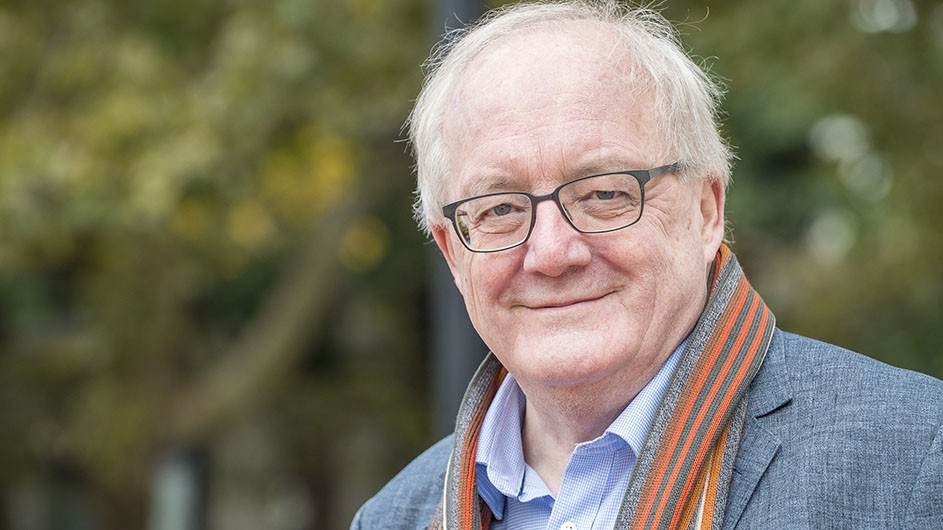Simon Tavaré Takes Aim at Cancer with Math

For most of his career, Simon Tavaré has worked at the intersection of the mathematical and biomedical sciences. A pioneering statistician and internationally recognized cancer researcher, Tavaré was appointed by President Lee C. Bollinger in July as director of the University’s newly established Herbert and Florence Irving Institute for Cancer Dynamics.
Tavaré joined Columbia after five years as director of the Cancer Research UK Cambridge Institute at the University of Cambridge, where he was also a professor in oncology and in the department of applied mathematics and theoretical physics. He previously held professorships at the University of Utah, Colorado State University and the University of Southern California.
“The opportunity to lead a new institute focused on the quantitative and technological underpinnings of cancer research, based in a great university in one of the world’s most diverse cities, was too good to pass up,” Tavaré said. “I expect the institute to play a major role in untangling the complex web of genetic and molecular interactions in cancer evolution, leading to a better understanding of how to treat the disease.”
Q. What is the mission of the new institute and your vision for its future?
A. It is a truism of modern cancer research that data are easier to collect than to analyze. The institute is intended to bridge that gap by engaging with Columbia researchers to develop novel analysis approaches supported by the experimental technologies that will address pressing issues in cancer research. A major focus will be in computational cancer genomics and breakthrough technologies based on imaging and light microscopy.
We will provide a number of new, endowed professorships across the Morningside campus and collaborate closely with members of Columbia’s Herbert Irving Comprehensive Cancer Center and Data Science Institute, and other New York institutions.
Q. What research initiatives from Cambridge will continue at Columbia?
A. In Cambridge, we led the analysis of large studies in breast cancer, esophageal adenocarcinoma and glioblastoma, research areas I hope to continue at Columbia. Our approach will accelerate understanding of the molecular basis of cancer, by identifying how mutations interact to drive tumor growth, what the opportunities for targeted therapy are and how the tumor responds to treatment.
Q. What are you discovering that offers hope for improving cancer outcomes?
A. There’s been enormous progress unraveling the molecular principles behind cancer, and survival rates are improving for many types. That said, some cancers are far more challenging, including esophageal, pancreatic, lung and brain cancers. Novel approaches to treatment are evolving around immunotherapy, in which the body’s immune machinery is targeted toward destroying the tumor; these have been successful in some lung tumors.
Several other initiatives may well make a real impact. The first is better understanding how lifestyle choices affect cancer incidence. Smoking is the classic example, but we now know more about obesity’s role in the disease. There also is a major focus on early detection and diagnosis by exploiting technologies such as imaging and wearable devices.
A key problem is understanding the structure of tumors. Most tumors derive from one mutated cell; however, during the course of cell division other cells can mutate and acquire new characteristics. Drug treatment can wipe out some of these malignant cells, but it can also allow others to grow, causing the patient to relapse as the effectiveness of the drug fails. We are developing sophisticated mathematical methods aimed at identifying the most aggressive cell types by finding out which mutations truly matter.
Q. What are you working on now?
A. Biology works in both space and time. At the Cambridge Institute, a group of investigators are working with a multinational team—including Columbia—to study the spatial structure of tumors in three dimensions. This will allow researchers to study how different cells work together to help tumors survive and grow.
Here at Columbia, we will work on the statistical analysis aspects of the project, developing methods to identify tumor cell types, study interactions between them and compare samples. Underpinning the project is a sophisticated virtual reality platform that allows researchers to immerse themselves in the 3-D cancer world. Imagine clinicians and scientists in different locations, all looking at the same tumor at the same time. This should help identify the therapy best suited to the patient, delivering on the promise of personalized medicine.
Realizing this future, however, will require new tools. To that end, we will build one of the experimental 3-D instruments at Columbia so we can analyze tissue collections from several tumor types.
Q. What made you choose computational cancer genomics as the focus of your work?
A. Probability and statistics became the subject of my Ph.D. My early research was in mathematical population genetics, which attempts to predict how the genetic makeup of populations evolves over time. My first U.S. job was at the University of Utah, working with the Mormon pedigrees to determine how particular diseases are inherited. Later work developed statistical methods for analyzing large DNA datasets taken from humans, plants and fruit flies to uncover common evolutionary principles. In the mid-90s my focus changed from studying variation in populations of people to populations of cells. Our efforts began with sampling pieces of a colorectal tumor and attempting to reconstruct its history from molecular data obtained from the pieces. This field has grown in leaps and bounds since, and new technologies are providing deep insights into tumor evolution. Evolutionary principles drive the behavior of tumors, and we need to better understand how.